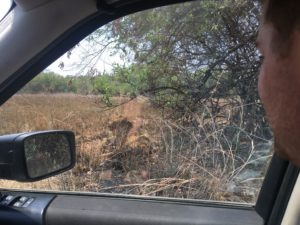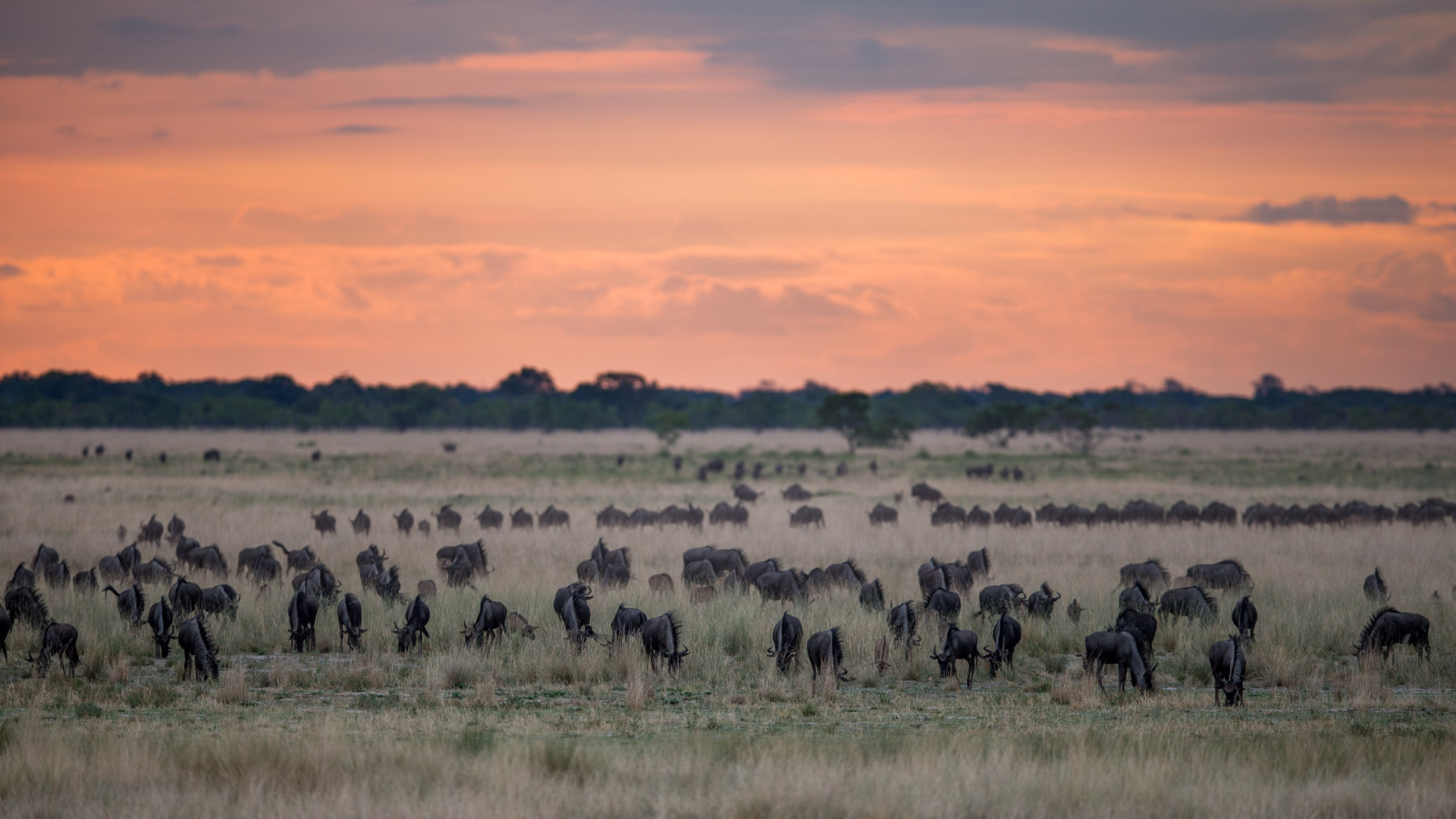We often get asked for tips from customers, who are going on self drive safaris. We have compiled a list of tips on how to deal with animal encounters when you’re without a guide.
Self-drive safaris are awesome and if just a few precautions are taken they are not dangerous. In Africa, humans and mosquitoes are your worst enemies – not wild animals.
General Safety:
If your car breaks down stay with your vehicle. And never drive fast as wild animals can suddenly cross the road.
Walking at night or early mornings gives you the best chances of encountering animals, but are also the most dangerous times as this is when the animals, including snakes and scorpions are most active.
Camping:
- Always zip up your tent
- Don’t walk about at night
- Don’t take any kind of food into your tent or leave any right outside your tent.
- While roof top tents are perceived to be safer, a tent on the ground if likely just as safe from big animals. Hippos and elephants are completely aware of their surroundings, even at night, and won’t step on a tent.
- If you are allowed to camp outside a designated camp site, be aware of animal footpaths as you don’t want to get in the way of an elephant herd on its way to a waterhole.

Lions, leopards and cheetahs:
- Leopards are very shy animals and will be on the run.
- Lions on the other hand can get very curious.
- Close your windows and lock your doors. Lions have been seen opening car doors.
- If you encounter a cat or other predator on a walk, walk away slowly and never turn your back.
Creepy Crawlers and Snakes
- Kick wood and logs before picking them up to dislodge snakes, spiders and scorpions. And always keep your boots inside your tent to stop them from crawling into them.
- Always wear boots and socks when walking around to prevent snake and scorpion bites.
Near Water:
- Crocodiles can be a risk. Especially near animal footpaths.
- Hippos are a big risk, even if they’re in the water and you’re on land. Always keep you distance. Hippos can run between 30-50 km/hr on land!
Elephants, rhinos and buffaloes:
- Keep a safe distance.
- Don’t startle them.
- Don’t use your horn.
- Don’t use flash on your camera.
- Keep your voice low.
- The danger with both elephants and buffaloes are with the lone males.
- Old buffalo males tend to wander alone or in small groups and are more easily provoked into an attack.
- Large buffalo herds are placid if left undisturbed.
- If you encounter a lone male in your way, keep you distance. If it comes towards you, slowly back away. Only move forward and slowly past it when it is relaxed and you won’t confront it.
- Switch off your engines if you are at a safe distance as the rumbling of the engine can be disturbing.
Special note on elephants:
- If you can see a herd of elephants in front of you that are split (i.e half are on one side of the road, half are on the other) it is advisable to stop a safe distance away, switch off the engine, and wait to see if the elephants want to cross the road. If they are making their way across, be patient and do not try to maneuver around them while they are moving – wait for the herd to cross.
- If they are comfortable browsing and eating, and are making no moves to cross the road, driving past slowly is advisable – don’t speed past as it may spook them.
- Of course, if there are babies on one side, or crossing road, the age old ‘don’t separate a mother and her child’ applies.
- If elephants are browsing (feeding from shrubs or trees) and immediately stop to watch you, do not push them or provoke you. They are sussing you out, just as you are them. Once they continue eating, it is generally safe to carry on down the road. Sometimes elephants false feed, meaning they pretend to eat, or play with a piece of bark or leaf to make you think they are feeding – but they are really spying on you! : ).
- Body language with elephants is extremely important, and can generally tell what they are feeling long before any action has to take place.
If you approach an elephant, and they are sideways toward you (for example, feeding on the side of the road) they are generally comfortable if they remain in this position. Eating = usually comfortable.
However, if elephants are sideways as you approach, but turn to put their bums towards you, they do not want to be bothered so it is best to carry on.
Ditto with if they turn around to face you – move away quickly.
- If an elephant is just standing in the road (for example, a lone bull) it is advisable to stop a safe distance away, turning the engine off again, and wait for him to make a move. Patience is key – once he has moved off, it is safe for you to do so. DO NOT (even if you are in a rush) push him or provoke him to move. Lone bulls can be a lot like old, grumpy men – push them and they will push back. The number one rule to remember in the Kruger is that animals have the right of way – we are in THEIR territory, not the other way around.
- Do not (actually, this applies to all sightings) lean out of the window and make noise to attract the elephant’s attention so you can snap a great photograph. This agitates them.
Please note that there is A LOT more detail I can go into here – but for the length of the post’s sake, I am only touching on basics.
Our elephants on the reserve, and the ones in Kruger, have enabled us to begin to learn how to spot an annoyed, uncomfortable, distressed or agitated elephant – i.e. one that should not be approached. These are called displacement activities.
- Flapping of the ears is generally always associated with annoyed elephants – however, this is not always true. Flapping ears may also mean that the elephants are hot. Take a look at the others – are they also all flapping ears? Or is it only one?
Again, the body language comes into play here. Is the elephant flapping his ears and eating, facing you sideways? Or is he facing you head on with a stiff body and not eating?
- Is his trunk twitching and moving around in an unfamiliar way? (Again, there is a lot more detail to this – they may just be smelling you – but telling the difference comes with experience)
- Is he swinging one of his legs (usually the front ones) to and fro? Is he bush bashing, or throwing dust everywhere?
- Open ears and a stiff body can mean he is trying to look bigger to intimidate you.
- Noise; An elephant will generally always tell you he is annoyed before anything needs to be taken to the next level. Is the one you stopped next to making noise? Trumpeting, or rumbling excessively?
- Mock charge vs. Real charge: I do hope that your encounter with an elephant will never reach this level.
Again, look at the body language; his ears. An elephant that is mock charging you will generally have relaxed/flapping ears. He is testing you with a mock charge to see if you are a threat or non-aggressive.
However, if he comes for you with his ears pinned back against his head, the charge is most likely a real one. This is often paired with a curled trunk (inward) to make way for impact.
Side note; Elephants and a car engine – Though the elephants in the Kruger are largely used to it now, they still do not find the rumbling of an engine pleasant as it can interrupt their own rumblings and they can become confused. The vibration of the engine also can aggravate them, so if you are at a safe distance, it is advisable to turn off the engine while enjoying the sighting of the elephants.



